(20 November 1851 – 17 September 1940)
The University of North Carolina at Chapel Hill Herbarium (NCU) has cataloged 25 vascular plant specimens collected by Ms. Taylor, all collected between 1889 and 1893. As cataloging of our collections continue it is likely that more will be found. Collecting locations include Baltimore County, Maryland as well as Dorchester and Richland Counties, South Carolina. All were obtained in 2002 from the Jesup Herbarium of Dartmouth College (HNH), though how her specimens came to be in Hanover, New Hampshire is unclear.
Other herbaria curating Ms. Taylor’s collections include Academy of Natural Sciences (PH), Delaware State University (DOV), University of Michigan (MICH), University of Minnesota (MINN), University of Vermont (VT), University of South Florida (USF), Towson University (BALT), Texas A&M (TAES), New York Botanical Garden (NY), Missouri Botanical Garden (MO), Michigan State University (MSC), Miami University (MU), Harvard University (GH), Field Museum (F), Carnegie Museum of Natural History (CM), and California Botanic Garden (RSA).6
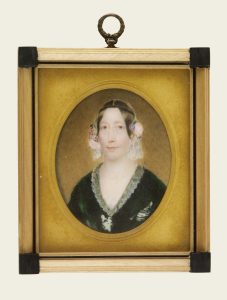
Katherine Augusta Taylor was born to William Wallace Taylor, Jr. and Catharine Augusta Birckhead Taylor on 20 November 1850. 1,3 The family was wealthy – grandfathers on both sides were involved in banking and railroads – and lived on Mount Vernon Place in Baltimore, one of the city’s oldest neighborhoods and home to many of its wealthiest families in the 1800’s. Mount Vernon Place is now designated as a National Landmark Historic District and a Baltimore City Cultural District.2
How Ms. Taylor developed her interest in plants is not known. However, it is clear that she took collecting seriously, and it is clear that she corresponded with noted botanists of her day, including Charles Sprague Sargent and John Kunkel Small. It is puzzling that no specimens found to date were collected near her home in western Maryland; none found to date mention “Cascade” or “Washington County, Maryland” as the collection locality. It is also unclear at this time what Ms. Taylor’s connection —other than botanical interest – was to South Carolina.
Ms. Taylor acquired 500 acres of land near Cascade, Maryland, and built her home, “Tipahato,” there in 1902. Tipahato was finished in 1904 and first served as a summer residence, though Ms. Taylor moved there permanently in 1912. 3 “She managed her property as a working farm, going into town to purchase supplies in jeans when other women of her wealthy social set wore only dresses with white gloves and never earned a living. Local legend,” writes Pat Schooley of the Hagerstown Herald-Mail, “says that Taylor had fallen in love with a musician whom her father forbade her to marry, and this was the reason she left her parents’ home and moved to the mountain, determined never to marry… She lived there with her disabled sister, Amelia, entertaining friends from Baltimore with small musical ensembles in which the man her father refused to let her marry was said to have sometimes played.”
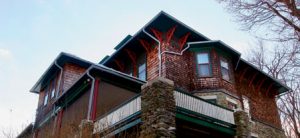
Katherine Augusta Taylor died in 1940 and willed Tipahato to her cousin, Mr. Henry S. T. White, who used it as a summer home until his death. In 1946 Mr. White’s estate sold the house to George and Dolly Byrne, who operated it as a sanitarium people with mental and physical handicapps. Tipahato continued as a sanitarium until the mid-1970’s. “A succession of property owners followed,” according to Schooley. “The second floor was divided into two apartments, and the house deteriorated, even going into foreclosure.” Tipahato was acquired by new owners in 1997 and they began restoring it to its original glory.1
Katherine Augusta Taylor is buried in the graveyard of Germantown Bethel Church, adjacent to Tipahato, and her gravestone faces the house she loved.4,5
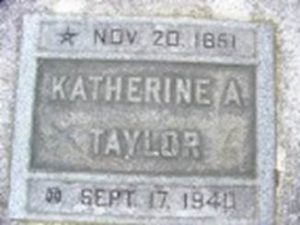
KATHERINE A. TAYLOR’S BOTANICAL ACTIVITIES
Sargent, C. S. (1894) New or Little-known Plants: Darbya umbellata. Garden and Forest 7 (313): 74-75. [Darby umbellata Gray is now known as Nestronia umbellulata Raf.]
In the spring of 1886 Miss K. A. Taylor, of Baltimore, found staminate plants near Columbia, South Carolina, and two years later the pistillate plant in the same locality; and the following notes from her pen give the best account of the habit and mode of growth of this extremely rare and interesting plant, which has not yet been brought into cultivation:
Oak, Hickory and other deciduous-leaved trees and shrubs. The soil is light, loose white sand, without stones, and is overlaid with a thick-covering of leaf-mold. The Darbya flourishes alike in sunny and shady situations. The roots are several yards long, an eighth to half an inch in diameter, dark red on the outside, white within, with rootlets at intervals of an inch or more; they branch every foot or so, and run in straight lines through the leaf-mold about two to six inches below the surface, crossing each other frequently and sending up shoots sometimes an inch and sometimes several feet apart. The leaves are always much larger on the pistillate than on the staminate plants. The two grow thickly.
Small, John K. (1895) Studies in the Botany of the Southeastern United States III. Bulletin of the Torrey Botanical Club 22 (1): 43-48. [the portion mentioning Ms. Taylor is on pg. 45]
BAPTISIA SERENAE M. A. Curtis, Amer. Jour. Sci. 7: 406 (1845). The range of this species, heretofore confined to the uplands and foot-hills in South Carolina and Georgia, has now been extended into the low country by its discovery by Miss Katherine A. Taylor in the pine barrens about Summerville, South Carolina.
Small, John K. (1897) Studies in the Botany of the Southeastern United States. — XII. Bulletin of the Torrey Botanical Club 24 (11): 487-496. [The segment referring to Miss Taylor is on page 489.]
MENTHA ROTUNDIFOLIA (L.) Huds. Fl. Angl. 221. 1762. Only one station in the Southern States, namely, “near Wilmington, North Carolina,” (Chapm. Fl. S. St. Ed. 2 313) has been recorded for this mint. However the species is spreading; in 1891 Miss K. A. Taylor collected specimens in a wet meadow near Columbia, South Carolina, and in 1895 I found it abundant near Trader’s Hill in southeastern Georgia.
Annual Report of the Board of Regents of the Smithsonian Institution Showing the Operations, Expenditures, and Condition of the Institution for the Year Ending June 30, 1896: Report of the U.S. National Museum. Washington, D.C.: Government Printing Office, 1898. [below is from List of Accessions, page 111.]
Specimen of Eryngium from Miss K.A. Taylor, Baltimore, Md. (29994)
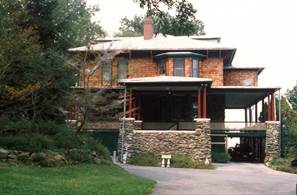
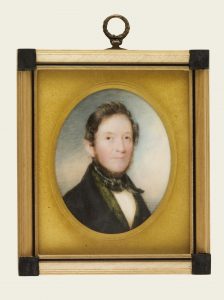
SOURCES:
- Schooley, Pat. “Beauty of mountain home re-emerges” Herald-Mail [Hagerstown, Maryland, U.S.A.] 18 November, 2007: E1+.
- http://en.wikipedia.org/wiki/Mount_Vernon,_Baltimore accessed on 19 December 2011
- Barnhardt, J.H. (1965) Biographical Notes Upon Botanists, volume 3. New York Botanical Garden, NY.
- Keyser, Cheryl M. (2006) Splendor on the Mountain – Arts & Crafts Home Tipahato: Love and Labor Restore Historic Tipahato to its Former Glory. Hagerstown Magazine. http://www.hagerstownmagazine.com/articledetail.aspx?id=159 accessed on 13 December 2011.
- http://www.findagrave.com/cgi-bin/fg.cgi?page=gr&GRid=52888885 accessed on 3 July 2013. Record created by Mike Hahn on 26 May 2010.
- Data Portal. 2021. http//:sernecportal.org/index.php. Accessed on October 07.